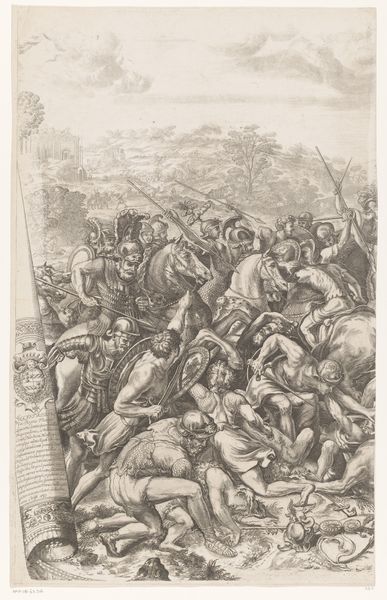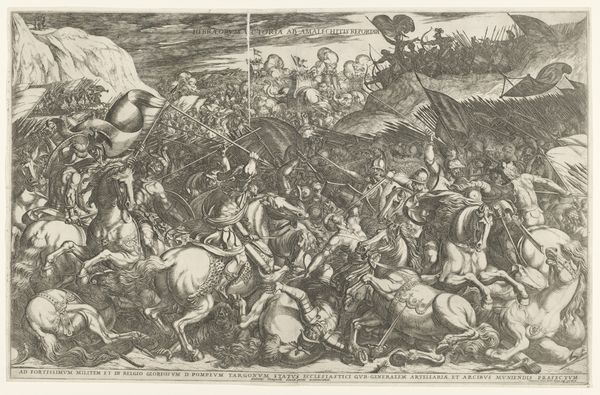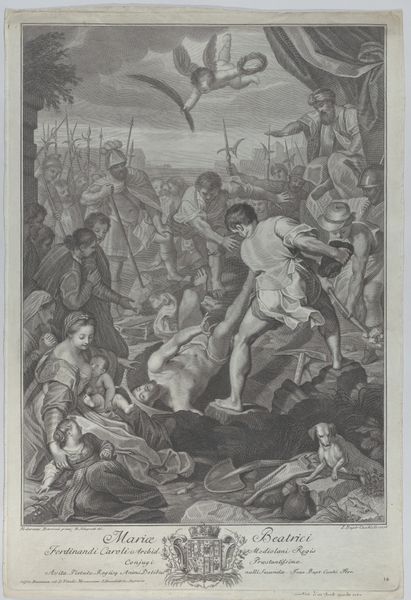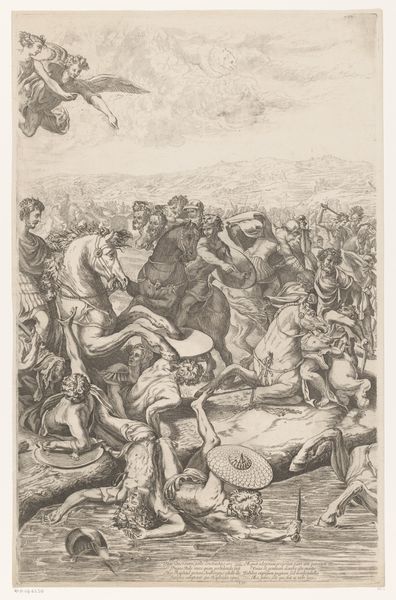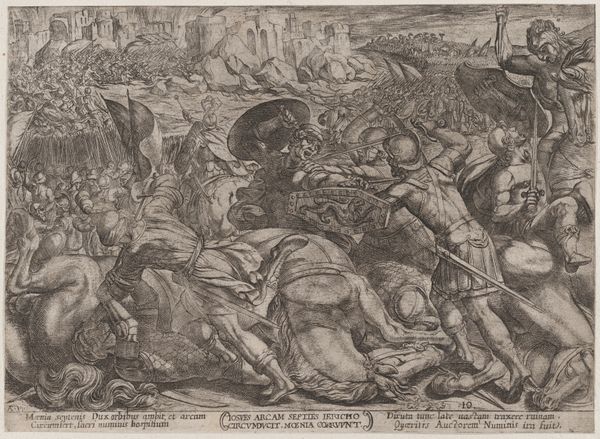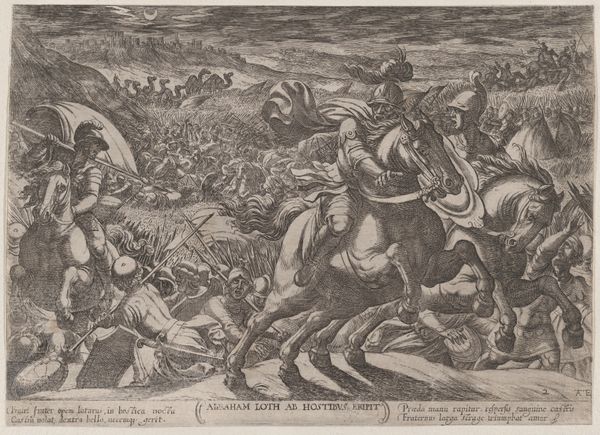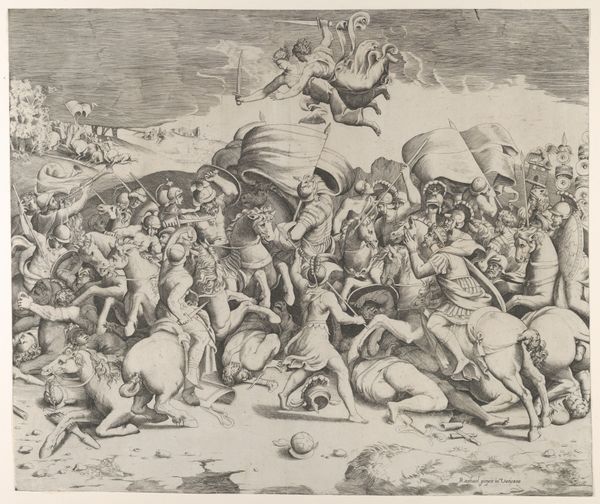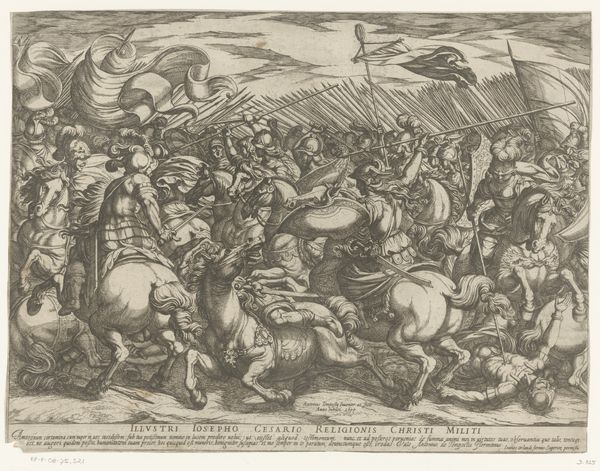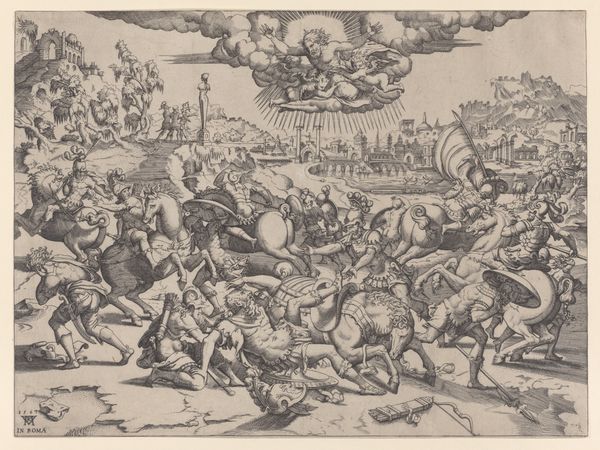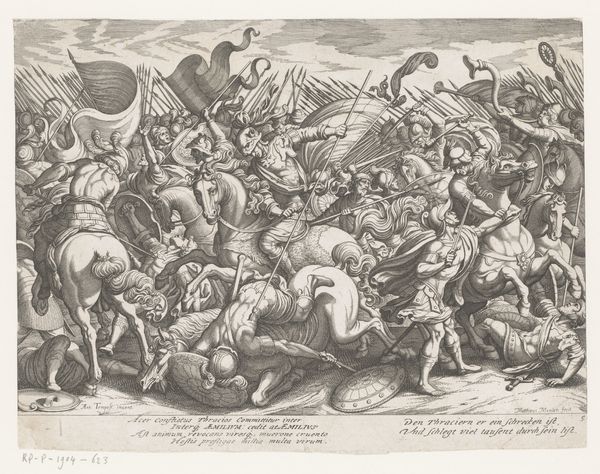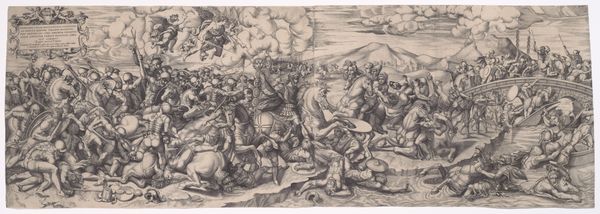
drawing, ink
#
drawing
#
ink drawing
#
narrative-art
#
baroque
#
figuration
#
ink
#
history-painting
Dimensions: height 689 mm, width 446 mm
Copyright: Rijks Museum: Open Domain
Pierre Scalberge created this print, *Slag bij de Milvische brug (tweede deel)*, in the early 17th century. It’s made using a printing technique called etching, where lines are incised into a metal plate, and then filled with ink to create an image. Etching has a distinctive graphic language. Look closely, and you’ll see that the image is built up with an accumulation of thin, precise lines that define form, texture and shadow. Unlike painting, where brushstrokes can be blended, each mark in an etching stands alone. The etched line also allows for the creation of multiples, meaning that this artwork could be widely distributed. Scalberge’s choice of etching was thus a means of democratizing his image, and of embedding it in a wider culture of reproduction and consumption. It’s a reminder that every artwork is also a product, shaped by the social and economic conditions of its making.
Comments
No comments
Be the first to comment and join the conversation on the ultimate creative platform.
